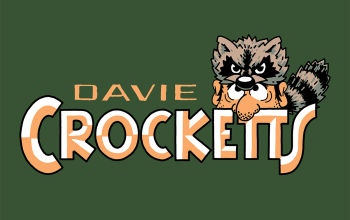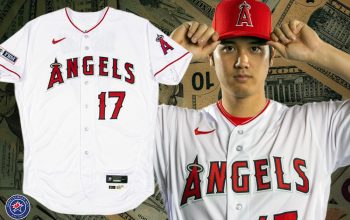In the course of writing this series, I have been surprised on many occasions to learn of connections between the names of sports teams and their home towns. So when I called up the Sacramento River Cats to learn the story behind their nickname, I was expecting to find that Sacramento, California, was perhaps the feral cat capital of the world, or maybe it has the highest percentage of cat ownership on the west coast, or possibly it’s the secret breeding ground for a species of super house cat with extra purring power.
I asked Robert Barsanti, the team’s coordinator of media relations, how come you guys are called the River Cats?

The reason for the “River” part of the team’s name is obvious. The Sacramento River is the largest in California, flowing 445 miles from the Klamath Mountains to the San Francisco Bay. It has enormous natural importance, playing host to wildlife like chinook salmon, serving as the watershed for a huge swath of northern California, and feeding lakes and other scenes in a beautiful part of the country. And it’s culturally significant, with ties to Native American heritage dating back thousands of years, Spanish exploration in the 1700s, and the California Gold Rush, to name just a few examples. Among the many notable landmarks along the river’s course, it flows right past Raley Field, home to the Triple-A Sacramento River Cats.
As for the second part of that name, why is the team called the River CATS?
“I don’t think the Cats has any real tie to anything,” Barsanti said.
No connection between Sacramento and the largest population of orange tabbies in the western states? No record for fattest house cat in North America? No huge kitty litter manufacturing plant on the outskirts of the city?

“When the team moved to Sacramento from Vancouver—we made that move in the ‘99–2000 offseason—we actually held an open vote for our team name. We asked the city and the surrounding areas to submit names that they thought would be great for the team, and took some of the more popular ones and considered them,” Barsanti said. “It was one of the more popular ones that was submitted, and you know, our team here liked it.”
So while the Cats part of the name was pulled out of thin air back before the 2000 season, some of the more interesting parts of the team’s brand are much more recent. Before last season, the River Cats had been an affiliate of the Oakland A’s for the entire duration of their tenure in Sacramento. Minor league baseball teams change parent clubs all the time, but when the River Cats signed on with the San Francisco Giants before the 2015 season, it generated more publicity and public reaction than any other move that offseason (with the possible exception of the Los Angeles Dodgers, who ended their affiliation with the Albuquerque Isotopes to purchase the Oklahoma City Redhawks and change the name of that team to the OKC Dodgers).
“The biggest thing is, while there was a strong reaction, I think it was stronger on the positive side,” Barsanti said. “There are a lot of Giants fans in the Sacramento region, even before our affiliation switch. Obviously, when you win three World Series in the span of five years, you get a lot of fans everywhere.”
That last point—that the River Cats have their own established brand independent of their parent club—is a driving force behind alternate uniforms the team will wear this season. The new identity, created by the team’s in-house designer Mike Villarreal, connects the team to San Francisco with Giants colors and an image of the Golden Gate Bridge, but it plays up the city’s nickname, Sactown.
“The River Cats really are Sacramento’s team,” Barsanti said. “People aren’t just A’s fans, or just Giants fans. They’re River Cats fans.”
Of course, some people who are not fans of the Sacramento River Cats are their intrastate rivals, the Fresno Grizzlies, the team the San Francisco Giants left to become parent club to the River Cats.
As a part of a strong Oakland A’s farm system, the River Cats had substantial success over the last decade and a half. Meanwhile, the Giants have had success at the Major League level, but they’ve done so at the expense of their farm system. When the River Cats switched parent clubs from the A’s to San Francisco, the caliber of Triple-A player wearing that Sacramento uniform dropped. The Fresno Grizzlies, on the other hand, signed on with the Houston Astros, who have one of the strongest farm systems in the Majors.
The River Cats and the Grizzlies spatted on Twitter and in the real world all last season, to the point where the Grizzlies put up a River Cats–themed “Wackramento” billboard in Sacramento. The Grizzlies won the division for the first time since 1998, but perhaps more importantly, defeated the River Cats 3-1 on June 16’s “Grumpy Cat Night,” a promotion in which they compared Sacramento’s logo to the grumpy cat of internet meme fame.
“After so many years of the River Cats being the top team in our division, I think that Fresno saw it as an opportunity to take a jump at us and have something to attack us with,” Barsanti said. “I think they were using it as an opportunity to kind of strike back for all the years of them not being as good of a team.”
Of course, one of the things about minor league baseball is that no one really cares that much who wins on the field—it’s a system designed to move those who excel on to the next level. But the River Cats have won on one of the profession’s most contested off-field battlegrounds—branding. The team is consistently on the annual list of top-25 minor league baseball teams in terms of merchandise sales, including the most recent list announced in June 2015.
The River Cats are one of those increasingly rare minor league teams where, to paraphrase Dennis Green, they are who we thought they were. There’s no contorted message or twisting and turning to give the name significance beyond “Hey, we thought it was cool.” This obviously has worked for the River Cats, and with a solid history of building their brand, there’s no reason for it to change any time soon.






